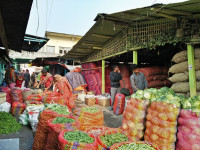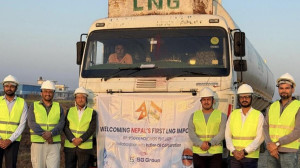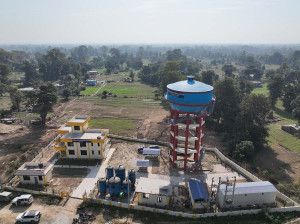Money
Capital spending bunches towards year-end, again
The government’s capital spending bunched towards the end of the fiscal year this time as well, as an average of Rs3.5 billion in capital budget was spent per day in the last three weeks, as against the daily average of 0.6 billion in the entire financial year of 2016-17.
The government’s capital spending bunched towards the end of the fiscal year this time as well, as an average of Rs3.5 billion in capital budget was spent per day in the last three weeks, as against the daily average of 0.6 billion in the entire financial year of 2016-17.
This kind of fund utilisation has once again raised the question on the quality of capital spending in the country.
The government had allocated a budget of Rs312 billion for capital spending in the fiscal year 2016-17. Of the total allocation, 42 percent, or Rs130 billion, was used till June 24, show the data of the Financial Comptroller General Office. Since then, capital spending has jumped by Rs72.7 billion. This means around Rs3.5 billion was spent on average per day in between June 25 and July 15.
With this spending, total capital expenditure stood at Rs202.7 billion, or 65 percent of the total allocation, in the fiscal year 2016-17. This implies that almost 36 percent of the total capital spending took place in the last three weeks.
Bunching of capital spending towards the end of the financial year is not a new phenomenon in Nepal.
In the last fiscal year, about 70 percent of the budget allocated for capital expenditure was used in the last three months of the financial year and 49.4 percent was spent in the last month of 2015-16. The trend was the same a year ago when about 63 percent of the capital budget was utilised in the final quarter and 44 percent in the last month.
“This pattern of spending increases the likelihood of sub-standard quality of capital projects and an increase in recurrent spending, in operations and maintenance costs, for the next few years,” says a report of the Asian Development Bank.
The capital budget is generally used to execute civil works, and purchase land, building, furniture, vehicles, plants and machinery, among others.
Timely and quality capital spending is a must for a developing country like Nepal which lacks critical physical infrastructure, like hydroelectric projects, transmission lines, irrigation projects, airports and roads. Investment in these areas helps attract private investment, create jobs and spur economic growth.
But Nepal has never been able to utilise capital budget in an effective and efficient manner.
Multiple factors have been playing a role in dragging down government’s capital spending. One is weak planning.
To make improvements on this front, the Ministry of Finance and the National Planning Commission have now started holding discussions with line ministries before including a project or programme in the annual budget. Unfortunately, this system is not foolproof. As a result, some of the projects or programmes are added to the fiscal policy in the last minute without conducting any homework.
One such instance is the inclusion of a plan in next fiscal year’s budget to expand the runway and parking bay at Tribhuvan International Airport by building a tunnel under the existing Koteshwor-Suryabinayak road segment.
Although the plan sounds feasible, it was included in the budget without consulting the Ministry of Civil Aviation, according to ministry officials, albeit the Ministry of Finance has refuted the claim. This means that a feasibility study of the project has not been conducted, which indicates funds allocated for the project will not be utilised in the next fiscal year. These types of problems prevent the government from fully utilising the capital budget.
Other problems for low capital spending include delay in preparation of detailed project design, land acquisition, establishment of project management offices and preparation of procurement plans.




 20.12°C Kathmandu
20.12°C Kathmandu














